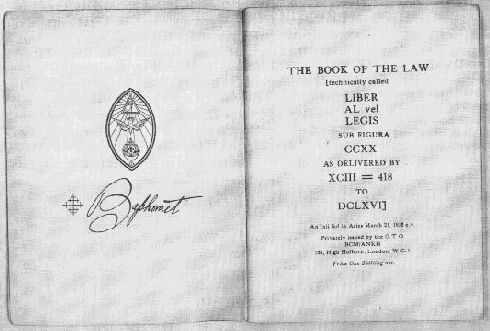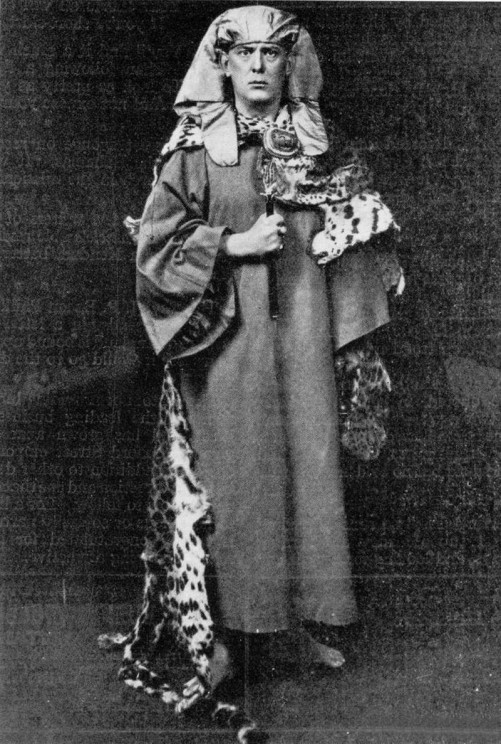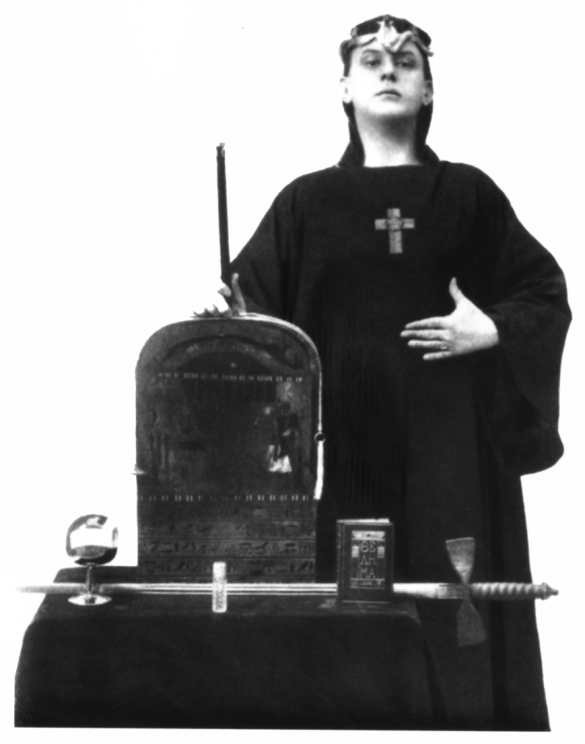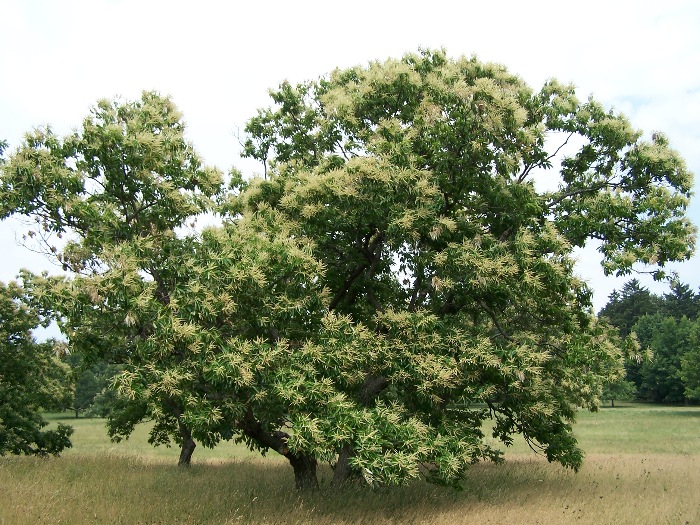By Alyssa Bender
The twelfth of August marks the Feast of the Prophet and his Bride, a holiday that commemorates the marriage of Aleister Crowley and his first wife Rose Edith Crowley in the religion he created, Thelema. Born in 1875, Crowley traveled the world, living in Cambridge, Mexico, Cairo, China, America, Sicily, and Berlin. Here, using Aleister Crowley and Western Esotericism as our trusted guide, we take a closer look at the man and his religion.
In 1898 Alesiter Crowley was initiated into the Hermetic Order of the Golden Dawn as Frater Perdurabo. The teachings of the Hermetic Order of the Golden Dawn were based upon an imaginative reworking of Hermetic writings further informed by nineteenth-century scholarship in Egyptology and anthropology. The order was structured around the symbolism of the kabbalah and organized into temples that were run on strictly hierarchical lines. Authority was vested in leading individuals, and initiates were given a rigorous and systematic training in the “rejected” knowledge of Western esotericism. They studied the symbolism of astrology, alchemy, and kabbalah; were instructed in geomantic and tarot divination; and learned the underpinnings of basic magical techniques.
Crowley’s magical self, Perdurabo, was a part of his concept of selfhood. In his own words:
As a member of the Second Order [of the Golden Dawn], I wore a certain jewelled ornament of gold upon my heart. I arranged that when I had it on, I was to permit no thought, word or action, save such as pertained directly to my magical aspirations. When I took it off I was, on the contrary, to permit no such things; I was to be utterly uninitiate. It was like Jekyll and Hyde, but with the two personalities balanced and complete in themselves.

The base camp of 1902 expedition for K2. Aleister Crowley is in setted in the middle. By Jules Jacot Guillarmod. Public domain via Wikimedia Commons.
In 1902, Aleister Crowley was a part of the team who made the second serious attempt to climb the world’s second highest summit, K2.

Frontpage from a published versions of Liber AL vel Legis. By Ordo Templi Orientis. Public domain via Wikimedia Commons.
In the spring of 1904, while on his honeymoon in Cairo, Egypt, he received a short prophetic text, which came to be known as Liber AL vel Legis or The Book of the Law. The book announces the doctrines of a new religion called Thelema, with Crowley—referred to in the book as “the prince-priest the Beast”—as its prophet.
The most important book of The Holy Books of Thelema, The Book of the Law is a channeled text that consists of 220 short verses divided into three chapters.
The core doctrines of this new creed of Thelema were expressed in three short dictums: “Do what thou wilt shall be the whole of the Law,” “Love is the law, love under will,” and “Every man and every woman is a star.”

Thelema Abbey in Cefalù, Sicily, by Frater Kybernetes. CC BY-SA 2.0 via Wikimedia Commons.
Thelema Abbey was established in the small Italian town of Cefalù in the period between 1920 and 1923. It consisted of one large house occupied by a small number of Crowley’s disciples and mistress(es). Life at the Abbey was for the most part Crowley’s attempt to translate his magical and Thelemic ideas into social reality. For the participants, the regime of life involved a great deal of occult and sex-magic activity as well as experiments with various mind-and mood-altering substances, such as hashish, cocaine, heroin, and opium.
Alyssa Bender is a marketing coordinator in Academic/Trade marketing, working on religion and theology titles as well as Bibles. She has worked in OUP’s New York office since July 2011.
Aleister Crowley and Western Esotericism, edited by Henrik Bogdan and Martin P. Starr, is the first comprehensive examination of an understudied thinker and figure in the occult.
Subscribe to the OUPblog via email or RSS.
Subscribe to only religion articles on the OUPblog via email or RSS.
The post Aleister Crowley and Thelema appeared first on OUPblog.

By Philip Durkin
The obvious answer to ‘when is a book a tree?’ is ‘before it’s been made into a book’ – it doesn’t take a scientist to know that (most) paper comes from trees – but things get more complex when we turn our attention to etymology.
The word book itself has changed very little over the centuries. In Old English it had the form bōc, and it is of Germanic origin, related to for example Dutch boek, German Buch, or Gothic bōka. The meaning has remained fairly steady too: in Old English a bōc was a volume consisting of a series of written and/or illustrated pages bound together for ease of reading, or the text that was written in such a volume, or a blank notebook, or sometimes another sort of written document, such as a charter.
The argument for…
The pages of books in Anglo-Saxon times were made out of parchment (i.e. animal skin), not paper. But nonetheless a long-standing and still widely accepted etymology assumes that the Germanic base of book is related ultimately to the name of the beech tree. Explanations of the semantic connection have varied considerably. At one point, scholars generally focused on the practice of scratching runes (the early Germanic writing system) onto strips of wood, but more recent accounts have placed emphasis instead on the use of wooden writing tablets.
Words in other languages have followed this semantic development from ‘material for writing on’ to ‘writing, book’. One example is classical Latin liber meaning ‘book’ (which is the root of library). This is believed to have originally been a use of liber meaning ‘bark’, the bark of trees having, according to Roman tradition, been used in early times as a writing material. Compare also Sanskrit bhūrjá- (as masculine noun) ‘birch tree’, and (as feminine noun) ‘birch bark used for writing’.
The argument against…
This explanation has troubled some scholars. There are two main reasons for this. Firstly, the words for ‘book’ and ‘beech’ in the earliest recorded stages of various Germanic languages belong to different stem classes (which determine how they form their endings for grammatical case and number), and the word for ‘book’ shows a stem class that is often assumed to be more archaic than that shown by the word for ‘beech’.
Secondly, in Gothic (the language of the ancient Goths, preserved in important early manuscripts) bōka in the singular (usually) means ‘letter (of the alphabet)’. In the plural, Gothic bōkōs does also mean ‘(legal) document, book’, but some have argued that this reflects a later development, modelled on ancient Greek γράμμα (gramma) ‘letter, written mark’, also in the plural γράμματα (grammata) ‘letters, literature’ (this word ultimately gives modern English grammar), and also on classical Latin littera ‘letter of the alphabet, short piece of writing’, also in the plural litterae ‘document, text, book’ (this word ultimately gives modern English literature).
In light of these factors, some have suggested that book and its Germanic relatives may show a different origin, from the same Indo-European base as Sanskrit bhāga- ‘portion, lot, possession’ and Avestan baga ‘portion, lot, luck’. The hypothesis is that a word of this origin came to be used in Germanic for a piece of wood with runes (or a single rune) inscribed on it, used to cast lots (a practice described by the ancient historian Tacitus), then for the runic characters themselves, and hence for Greek and Latin letters, and eventually for texts and books containing these.
However, many scholars remain convinced that book and beech are ultimately related, and argue that the forms and meanings shown in the earliest written documents in the various Germanic languages already reflect the results of a long process of development in word form and meaning, which has obscured the original relationship between the word book and the name of the tree. For some more detail on this, and for references to some of the main discussions of the etymology of book, see the etymology section of the entry for book in OED Online.
This article first appeared on the OxfordWords blog.
Philip Durkin is Deputy Chief Editor of the Oxford English Dictionary, and the author of Borrowed Words: A History of Loanwords in English.
Language matters. At Oxford Dictionaries, we are committed to bringing you the benefit of our language expertise to help you connect with your world.
Subscribe to the OUPblog via email or RSS.
Subscribe to only language articles on the OUPblog via email or RSS.
The post When is a book a tree? appeared first on OUPblog.










